



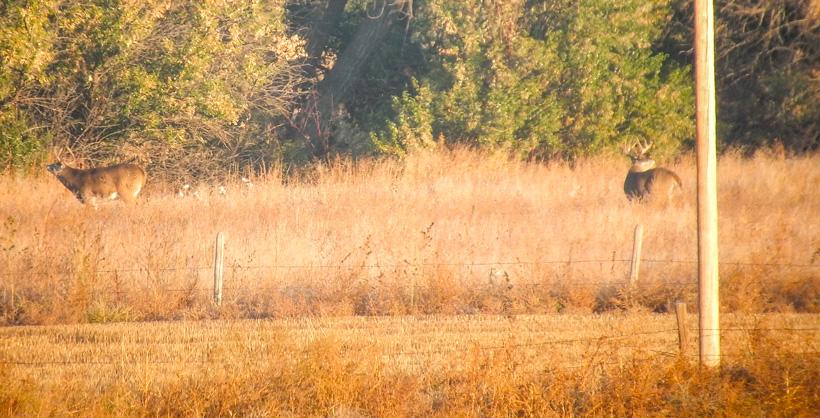
The buck on the left is mature to post mature and has a smaller rack. The larger buck on the right is middle-aged. Old age does not always spell big racks!
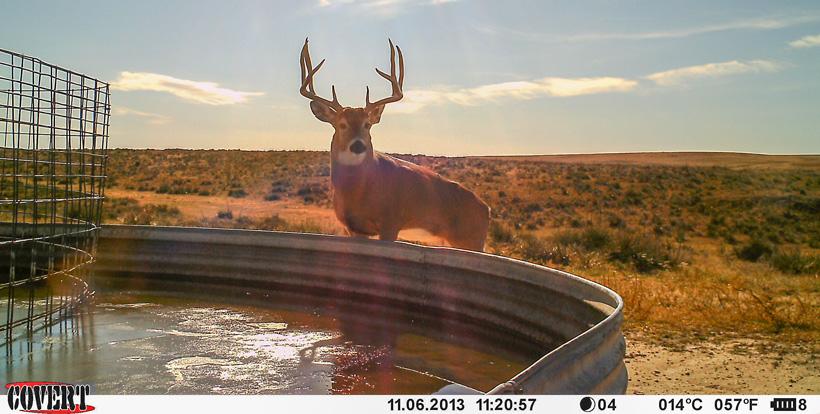
This buck is a mature 4x4. It is very possible that he will never have more than four points per side.
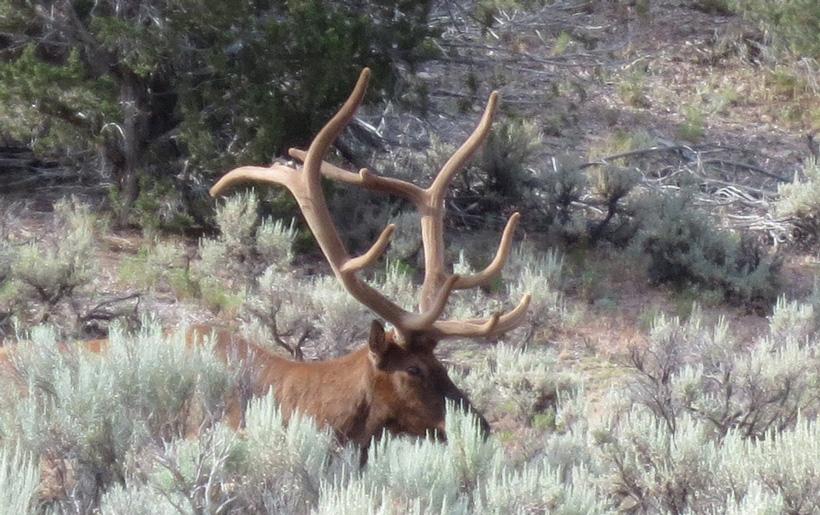
The same is true for this bull. Photo credit: Lorenzo Sartini
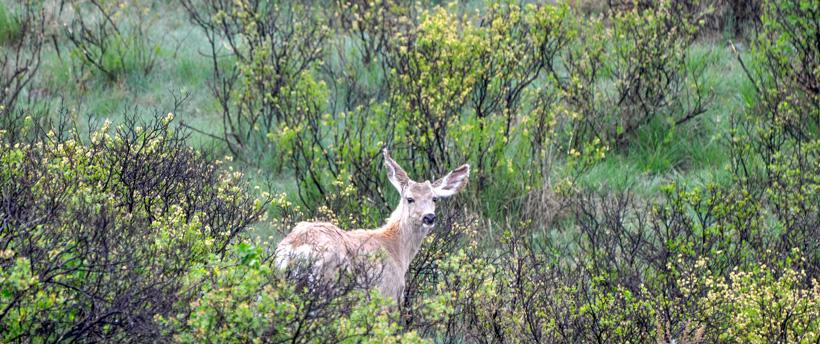
Mule deer buck starting to grow a fresh set of antlers.

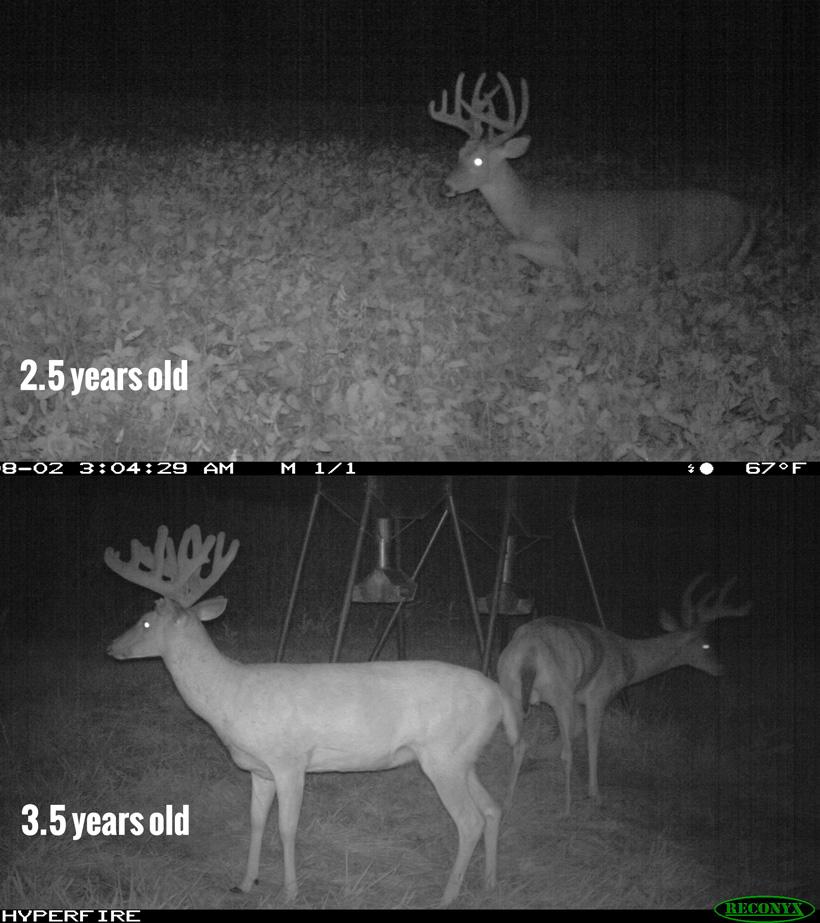
Split G2 age 2.5 and 3.5. Special thanks to Carolyn & David Jones
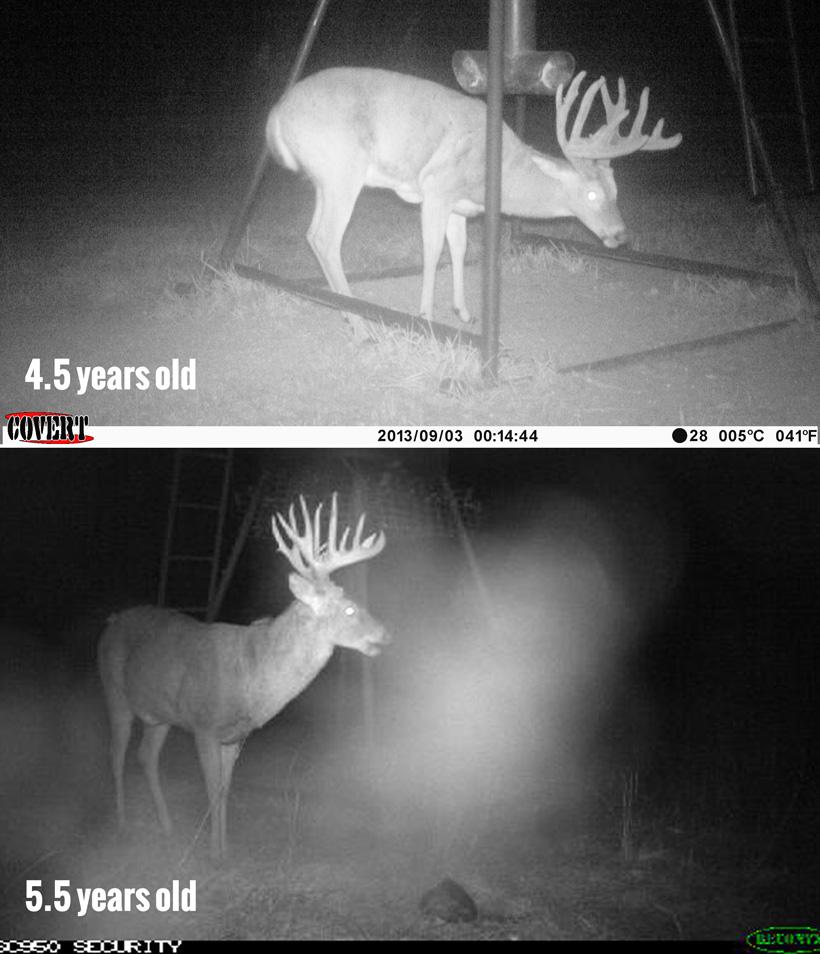
Split G2 age 2.5 and 3.5. Special thanks to Carolyn & David Jones
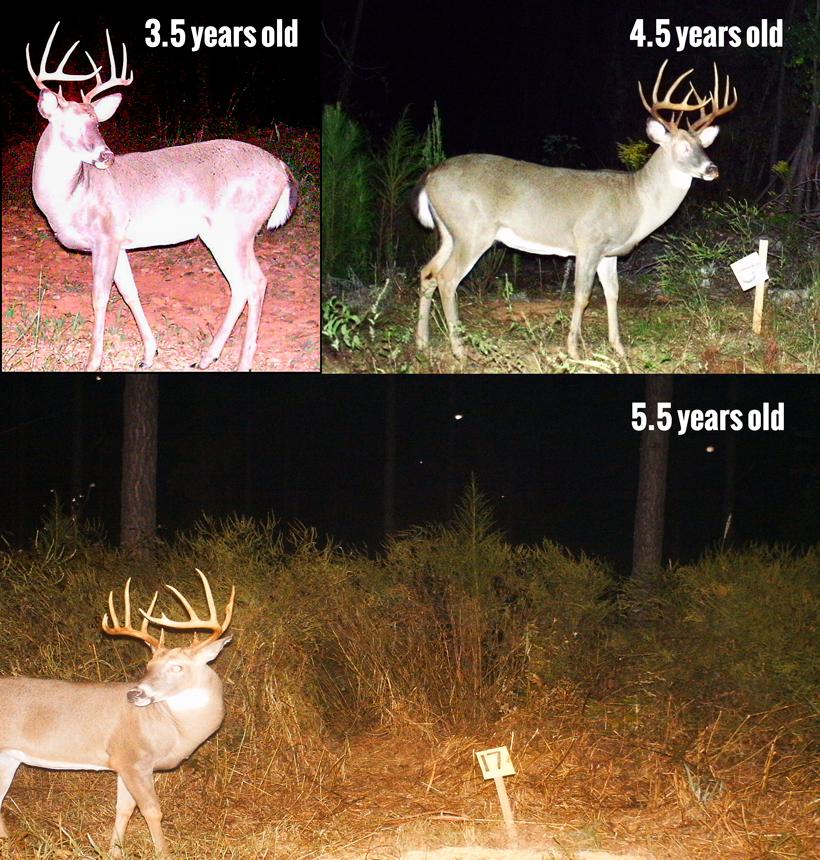
Georgia whitetail buck 3.5 to 5.5 years. Photo credit: Matt Haun, Quality Timber & Wildlife Management Inc.
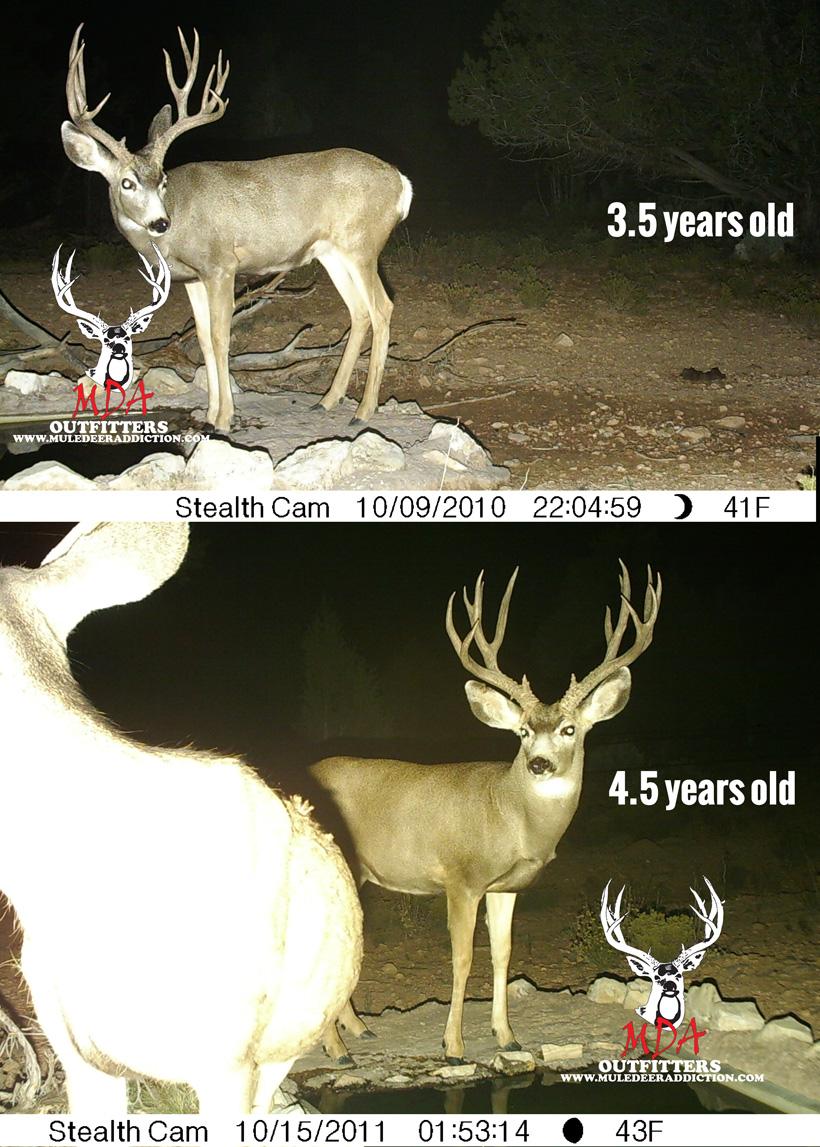
Arizona strip mule deer buck 5.5 to 7.5 years old. Photo credit: Brec Bundy, Mule Deer Addiction Outfitters
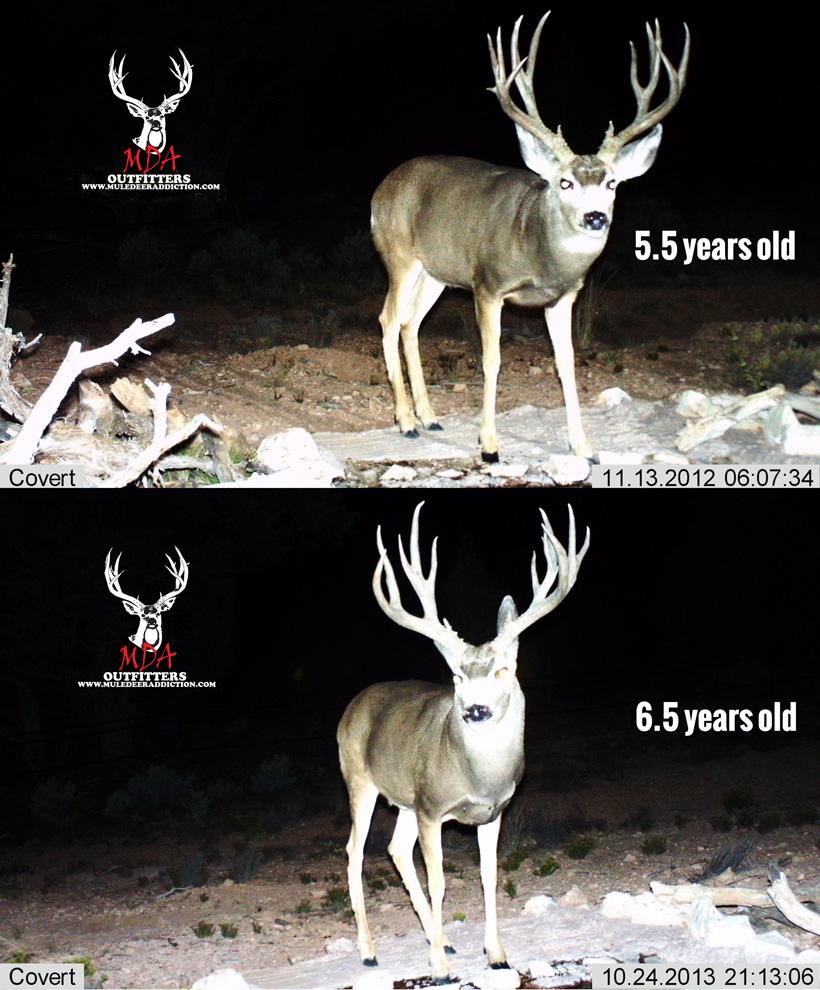
Arizona strip mule deer buck 5.5 to 7.5 years old. Photo credit: Brec Bundy, Mule Deer Addiction Outfitters
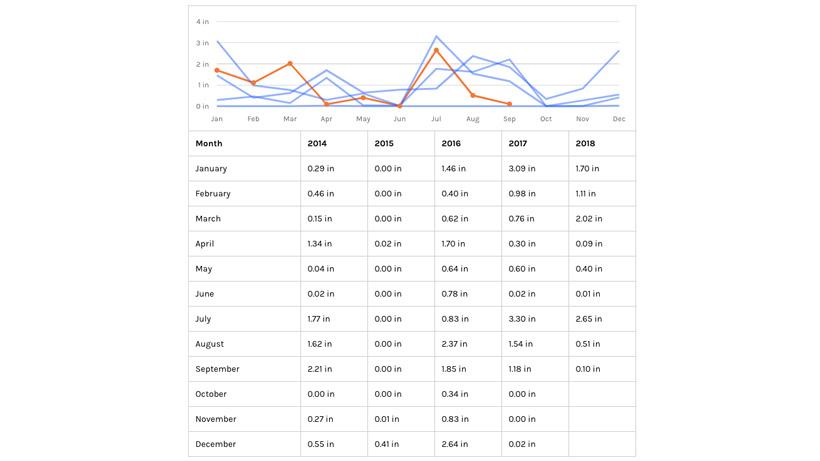

Antlers. We love them. They fascinate us. One of the fastest growing tissues in nature, whether a trophy hunter or not, antlers hold a certain power over us as hunters. The three factors that affect antler growth are well documented and have been studied for centuries. The factors that dictate year to year growth are the age of the animal, its genetic makeup, and its nutritional intake. Below we will examine these factors further as well as look at the year to year growth of a couple different bucks and bulls.
Age is a major factor that influences antler growth. Older animals grow bigger antlers. While this is a massive oversimplification, generally speaking, when we are looking at bucks or bulls the old ones are the ones that catch our eye. Field judging the age of an animal can be difficult, but this is something that with some practice can be made an inexact science. The individual variation comes into play here as well as the genetic makeup of the animal. A select few wild deer are capable of growing “trophy-size” racks at a young age. Every year bulls that gross over 360” plus are harvested and found to be under the age of seven. While rare, it happens. The same is true for mule deer. Some exceptional antlers can be found on deer in the “middle-age” age structure (3.5 to 4.5 years). As a general rule, though, large antlers come with big bodies and old age. For mule deer and whitetails, that generally means an antler growth peak occurring at 5.5 years of age or older. For elk, full growth potential may not be reached until over 10 years of age.
Genetics is another factor and one of the hardest variables to quantify. It is impossible to identify the parents of the individual buck or bull you are drooling at through the spotting scope. Yet, while hard to identify, we can look at historical harvest data to narrow down areas that consistently produce favorable genetics for antler growth. Counties that have historically produced Boone and Crockett class animals are assumed to have some superior genetic qualities, but strong genetics do not always spell big racks. A genetically gifted animal with a poor dietary intake will not reach his potential. What if Shaq had only eaten twinkies throughout his career? I don’t think the hall of fame would be calling. Genetic antler anomalies such as a mature bull elk that remain 5x5s, eight-point whitetails, or 3x3 muleys typically occur due to genetic factors.
Nutrition is the third factor that influences antler growth. The old saying that “you are what you eat” is also true for antler growth. The areas that are well known for producing trophy quality animals have one major factor in common: productive soils that produce quality forage year round. Rainfall also plays a major role in this part of the antler equation. Without water, quality forage does not grow and antler growth is not maximized.
In the world of the whitetail (and some mule deer and elk), agricultural crops play a major role in nutritional intake. While maximizing protein intake seems to be all the rage with wildlife management, studies have shown that sustained antler growth will occur with an average intake of +/- 14% crude protein. The most critical months for moisture/nutrition in reference to antler growth are typically February, March and April. During these months bucks/bulls have shed their antlers and are looking for that nutritional rebound to both regain weight lost during the winter/rut and boast antler growth.
These three factors are the ones most often associated with antler growth. There is one more factor that should be considered with regard to antler growth: individual variation. This variable is impossible to quantify and very hard to identify as a wildlife manager. Individual deer and elk exhibit personalities as variable as that of people. We all know ultra aggressive guys that are real go-getters and we also all know the perpetual couch potatoes. Some bucks are homebodies, staying in their 300 to 400 acre home range throughout the year. Others wander far and wide. The same is true with bull elk. Some bulls roll into the rut without ranging far from their summer hideout while others will travel upwards of 20 miles during the rut each fall.
How does this individual variation affect antler growth? Animals that tend to roam far and wide put themselves through more stress each fall than do the relative homebodies. They end the rut in poorer condition than the animals that exhibit more passive “homebody” behavior. What does this mean for hunters? Well, that depends on whether you are hunting in units where you can get a tag each year. If you do, taking the time to identify a buck’s home range and some of his “personality traits” can make year to year hunting a lot of fun.
The sequence below shows an Iowa buck at ages 2.5, 3.5, 4.5, and 5.5. As he grew older, his rack increased in size, but generally maintained some identifying characteristics. We fondly referred to this buck as “Split G-2” (I am sure you can gather from the photo sequence why).
This buck has some extremely unique genetic features. As expected this buck expressed his greatest leap in growth between the ages of 2.5 and 3.5 years old.
His mainframe from 3.5 to 5.5 years old did not change tremendously despite the addition of significant mass, some tine length, and more overall “character.”
The Arizona Strip buck pictured below has some very unique identifying characteristics. This buck’s frame remains remarkably similar from year to year. His point configuration remained much the same as he added mass each growing season.
It is worth noting that 2012 to 2013 was a relatively dry year on the Strip, which may help explain the buck in the above images relative lack of additional growth from 2011 to 2013.
Note: You can easily track precipitation on goHUNT's INSIDER set of tools.
Antler growth will always be shrouded in some level of mystery. That is part of what makes each year so much fun. There are no two racks alike! Keep the factors that affect antler growth in mind as you plan your fall hunts.